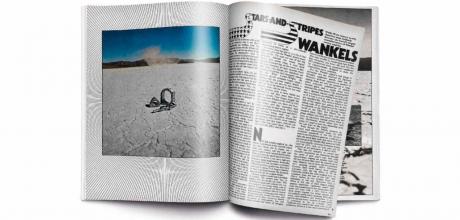50 Years Ago Today The promise of the Wankel engine had the V8s of Detroit trembling
In 1972 the end looked nigh for the big V8s, but an unlikely saviour of Detroit muscle emerged from Germany, via Japan
50 years ago today Looking back without hindsight
It was emissions that first looked set to derail America’s love affair with the V8. As CAR noted in its January 1972 issue, ‘Detroit’s executives are marching through the ranks of next year’s cars with their executioners, wiping out models right and left just because they can’t be cleaned up in time.’ The reason was the 1969 Muskie Bill, which called for 90-percent hydrocarbon-emission reductions by 1975. The Californian government had already banned sales of the big-block Corvette 454 on emissions grounds, and looked set to ban other new V8s too. Smog alerts had reached crisis point.
One solution, pondered Wally Wyss, was the Wankel rotary engine. He wasn’t talking about NSU’s first attempt at building Dr Felix’s engine, but Mazda’s more refined version. Whereas the troublesome NSU Ro80 had been shunned by US buyers, Mazda’s Cosmo, R-100, RX-2 and RX-3 were picking up a strong cult following. As well as building harder rotor tips for greater reliability, Mazda also added air injection, pumping oxygen into the exhaust system for lower emissions.
‘The Wankel simply isn’t affected by all these things that have Detroit’s management officials pondering high dives off skyscrapers,’ wrote Wyss. ‘For one thing, it doesn’t need to burn leaded petrol, because it can use petrol down to 69-octane rating. ‘For another, because it has no valves, you don’t have to worry about burning them. And perhaps the biggest advantage of all – the rotary is smaller than Detroit’s monster up-to-8.0-litre engines, and tremendously more efficient for its size.
‘When you consider all the claptrap that’s going to be under the bonnet of a Cadillac by 1975 besides the engine – catalytic reactor, air conditioning, power-steering pump, power-brake pump, air-injector, exhaust-gas recirculatory and God knows what else – you wonder if reducing the engine’s size by half might not help.’
Wyss went on to explain that GM had just struck a $50m deal with NSU and aero-engine maker Curtiss-Wright to replace Chevrolet’s 327ci (5359cc) V8 with a rotary unit, which led to a string of rotary-powered ‘Aerovette’ concepts that would supposedly herald its introduction. With an eye on Chrysler’s deal with Mitsubishi that allowed it to import and sell the Colt as a Dodge, Ford bought into Mazda with a view to putting its rotary engine in a new generation of its American cars. In 1972, it seemed the US was about to hum to the sound of whirling triangular rotors.
What it didn’t see coming was the OPEC oil embargo in response to US support for Israel in the Yom Kippur War. Suddenly, a shortage of oil gave a new problem to worry about – fuel economy – and rotaries were just as thirsty as the big V8s. Not that this mattered in the world of high-performance cars, as Mazda found out when it launched the RX-7 and sold nearly 80 per cent of them in the US, comfortably outselling the Corvette.


